Venerable sites: Places of worship to see in Romania

From wooden churches to imposing cathedrals, there is a wealth of sacred architecture and religious art to discover in Romania. Below we propose thirteen sites that speak of various communities and periods in the country’s history.
Voroneț Monastery in Bucovina
Northern Moldova is known for its beautiful painted monasteries, many of which are now UNESCO World Heritage sites. Voroneț was built in 1488 by Steven the Great to commemorate the victory at the battle of Vaslui against the Ottoman army. It is particularly known for the blue shade of its frescoes, labeled locally "Voroneț blue." The exterior walls, including the representation of the “Last Judgment” were painted in 1547.
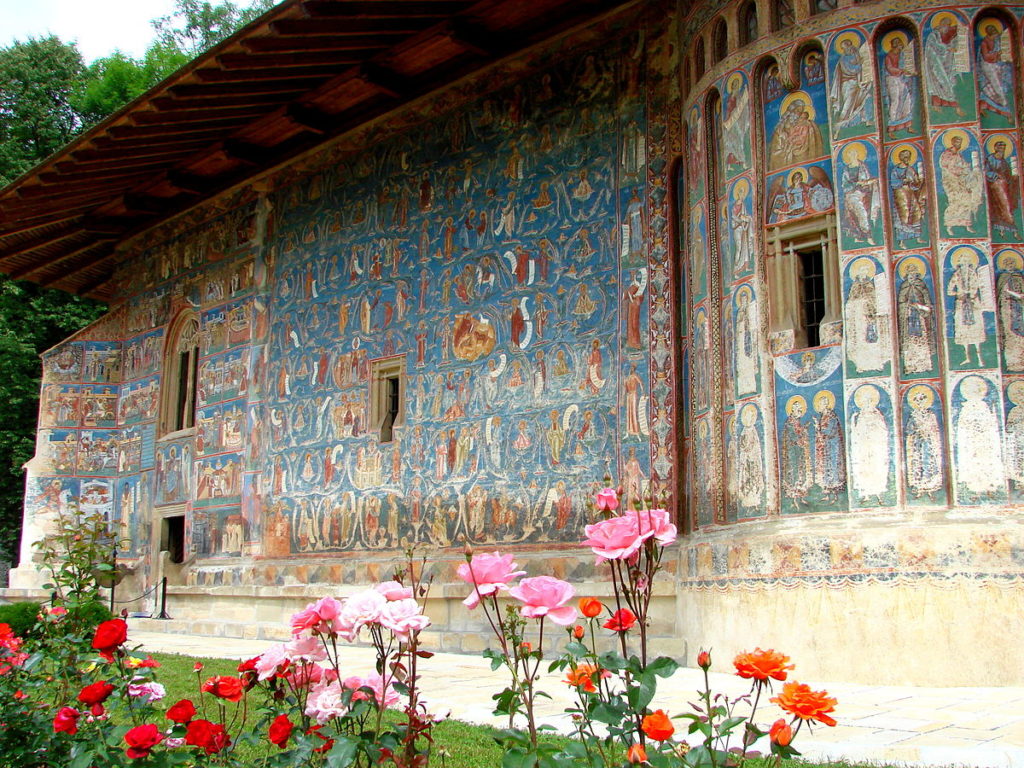 Voronet Monastery Photo: Adam Jones/Wikipedia
Voronet Monastery Photo: Adam Jones/WikipediaBesides the St. George Church of Voroneț, the list of churches in the area that were included on the World Heritage list covers the Beheading of St. John the Baptist church in Arbore village, the church of the Humor Monastery, the Annunciation Church in Vatra Moldoviței, the Holy Cross Church in Pătrăuți, the St. Nicholas Church in Probota, the St. George Church in Suceava, and the Resurrection Church in Sucevița.
Bârsana Church in Maramureș
This church dates back to 1720 and is among the Maramureș wooden churches listed as UNESCO’s World Heritage sites. These are recognizable by their narrow constructions, featuring tall and slim towers. Bârsana fits this description, while on the inside it features beautiful murals. The church also has a collection of icons painted on glass and old religious books.
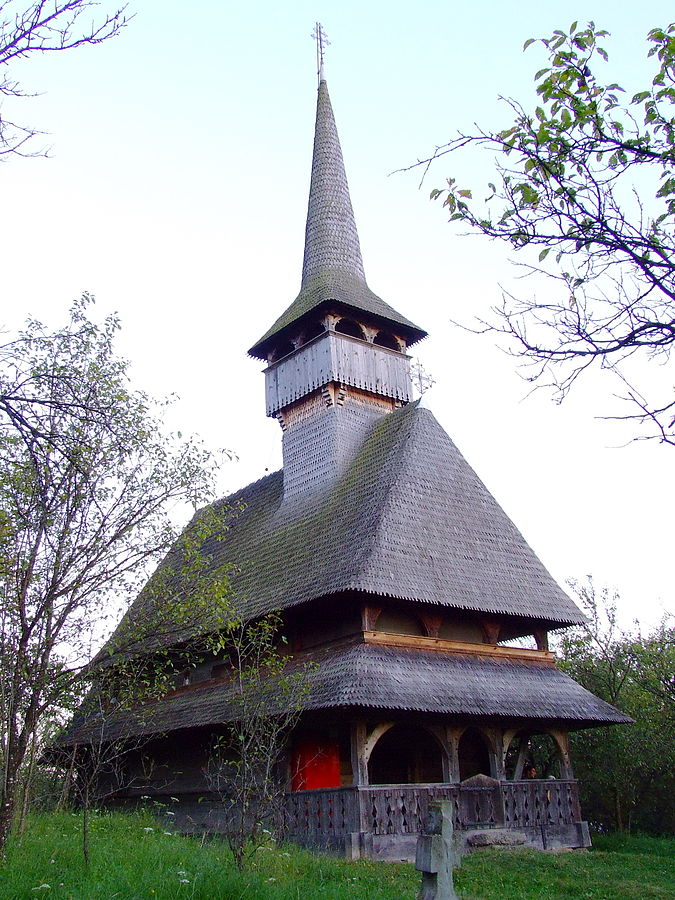 Wooden Church in Barsana, Maramures Photo: Bogdan Salaj/ Wikipedia
Wooden Church in Barsana, Maramures Photo: Bogdan Salaj/ WikipediaThe other wooden churches in the region that are World Heritage sites are the ones in Budesti Josani, Desesti, Ieud, Surdești, Plopiș, Poienile Izei, and Rogoz.
Curtea de Argeș Church
Located on the premises of the Curtea de Argeș Monastery, it was built between 1512 and 1517 by the Prince Neagoe Basarab. Its construction is surrounded by the local legend of Master Manole, who had to sacrifice his wife Ana for the edifice to be built. The building follows the Byzantine architectural style, with Moorish arabesques.
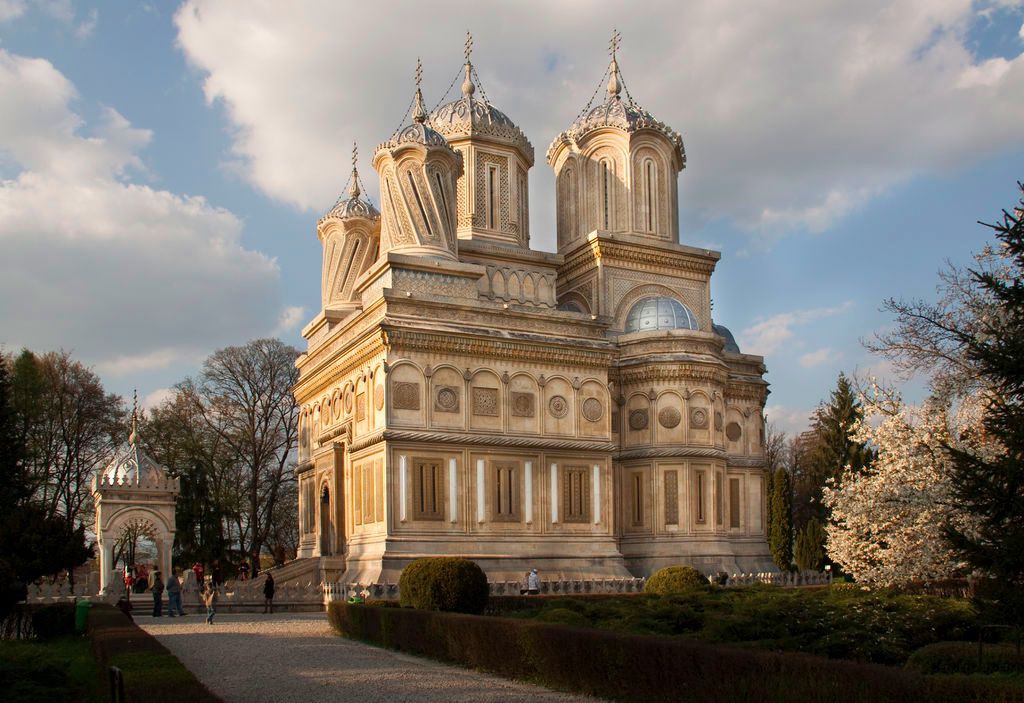 Curtea de Arges Monastery
Curtea de Arges MonasteryThe church is also the burial place of many members of the Romanian royal family, from King Carol I to King Michael.
Biertani Fortified Church
This fortified church was built by the Saxon community in Transylvania, between 1486 and 1524, on the site of an earlier Romanesque church. It features three rows of exterior fortifications linked by gate towers. Its premises host a ‘marital prison,’ where couples with problems were locked up for weeks to solve their issues.
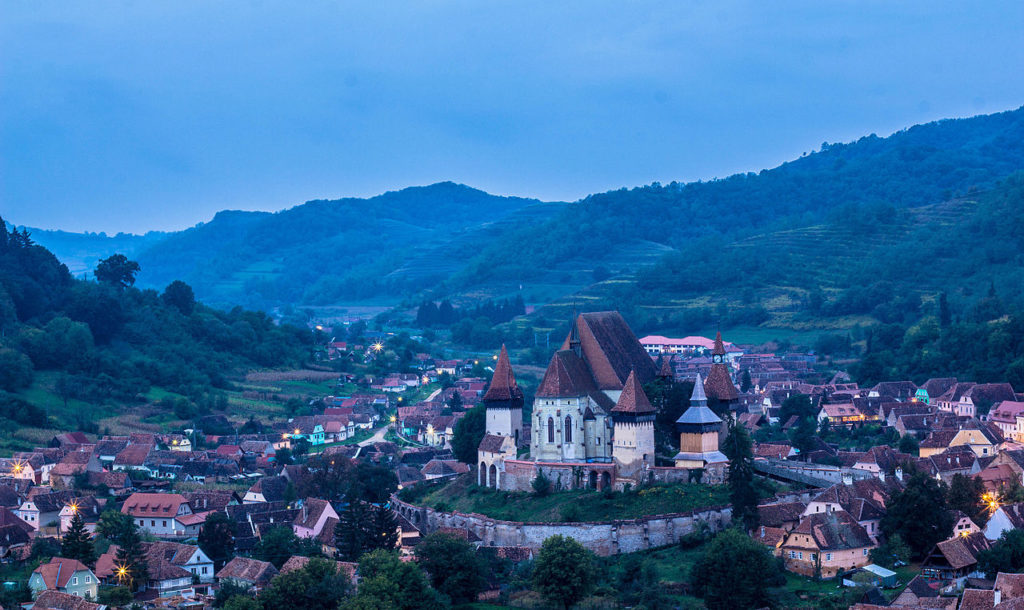 The fortified church in Biertan
The fortified church in BiertanTogether with the surrounding village, it is listed as an UNESCO World Heritage site, alongside the Transylvania villages of Câlnic, Dârjiu, Prejmer, Saschiz, Valea Viilor, and Viscri.
Black Church in Brașov
A landmark of Brașov, the Black Church sits on one side of Piața Sfatului, the heart of the old part of the city. The church was initially named Saint Mary’s but after a fire damaged it in the 17th century and blackened its walls, it was named the Black Church, a term it kept ever since.
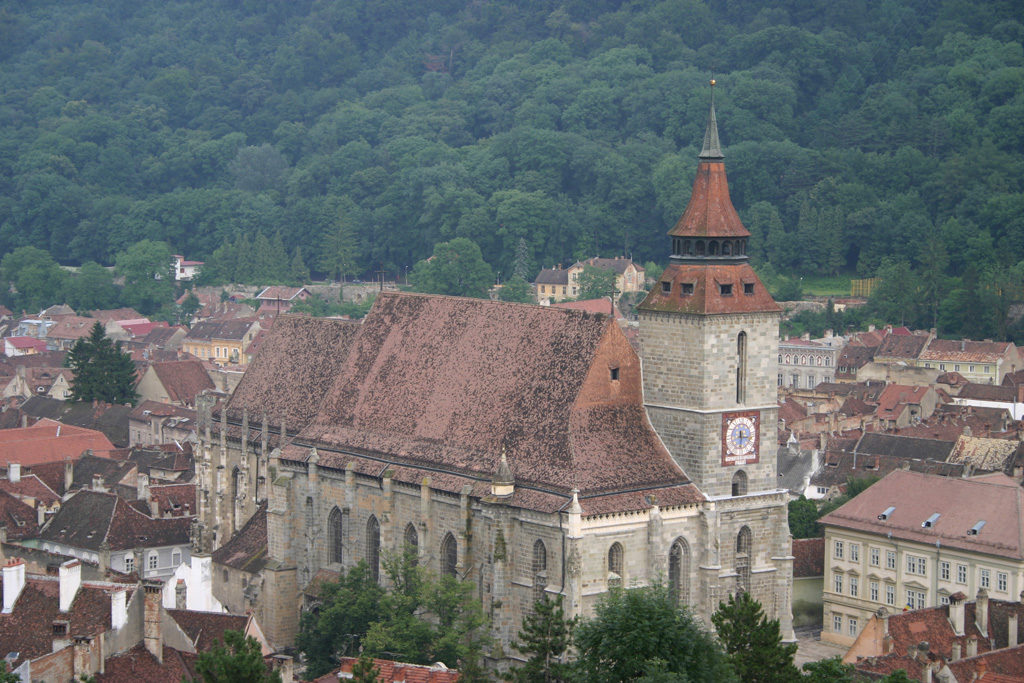 The Black Church Photo: Angelbo/ Wikipedia
The Black Church Photo: Angelbo/ WikipediaAt 89 meters long and 38 meters wide, it is one of the largest religious buildings in the country, serving the Evangelical community. The building was completed after 1476, and its architecture belongs to the late Gothic style. It features a six-ton bell and a pipe organ built in 1839 by Carl August Buchholz. The organ is still used at the various concerts taking place regularly inside the church. The church hosts a large collection of Anatolian rugs, displayed inside, and a collection of religious clothing, among others.
The Grand Mosque in Constanţa
Erected on the site of the former Mahmudia Mosque, the Grand Mosque was inaugurated in 1913, in the presence of King Carol I, whose name it carried for a while. Modeled after the Konya Mosque in Anatolia, it was built in the Neo-Egyptian and Neo-Byzantine styles.
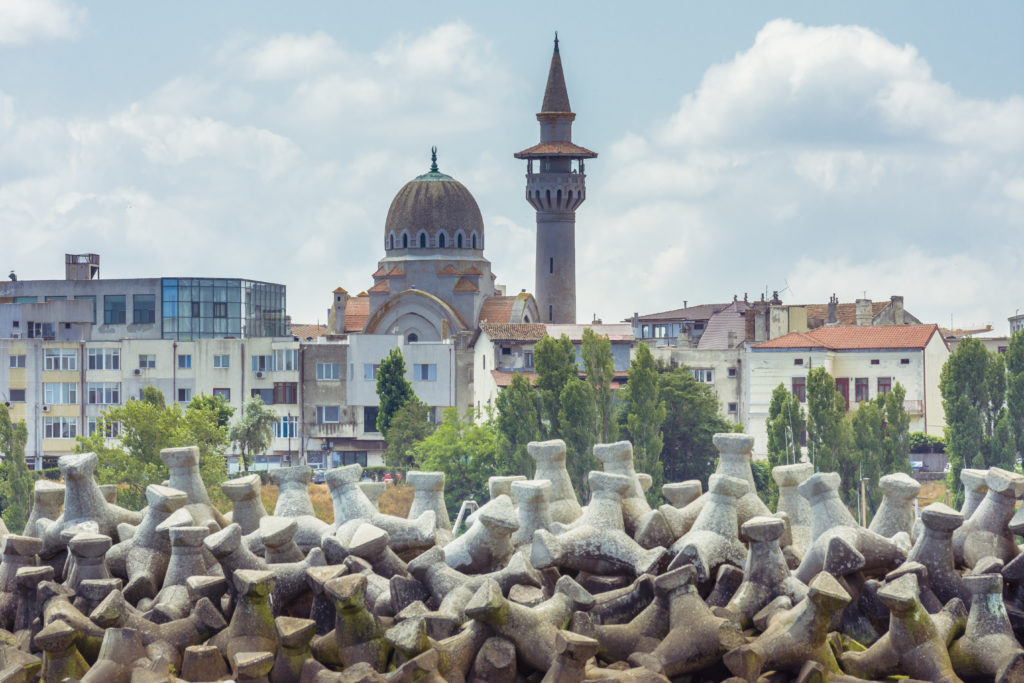 The Great Mosque of Constanta Photo: Adobe Stock
The Great Mosque of Constanta Photo: Adobe StockIt was the first structure in the country to be built with reinforced concrete. Its minaret is 47 meters tall, while the dome has a height of 25 meters. It has been a main edifice of the Muslim community in Romania.
Roman-Catholic Cathedral in Alba Iulia
Located inside the Alba Iulia citadel, the Roman-Catholic Cathedral Saint Michael is considered the longest cathedral in the country, at 93 meters. The construction was started towards the end of the 11th century but was partially destroyed during the Mongol invasion of 1241. It was rebuilt in the 13th century in a mix of Romanesque and Gothic.
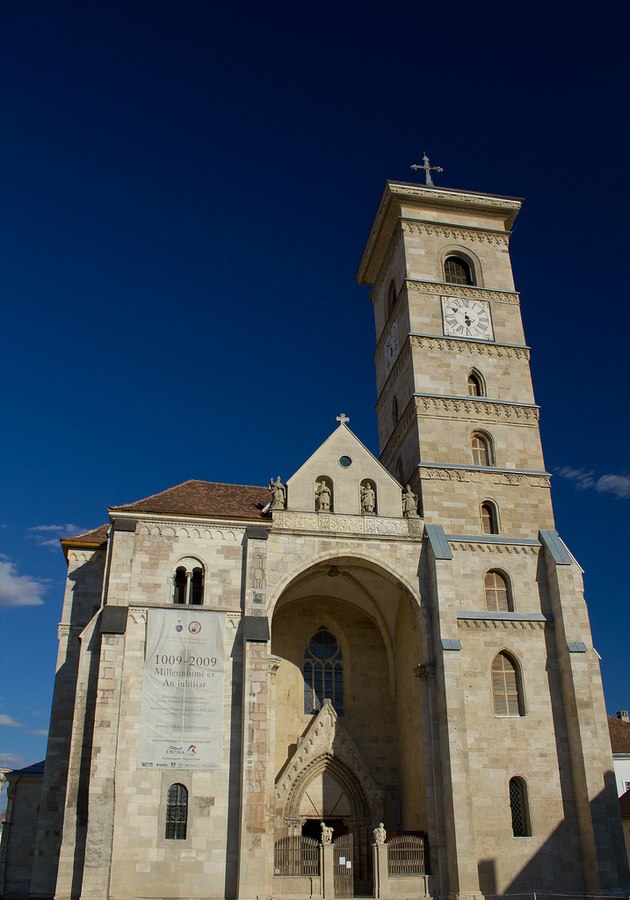 St Michael Roman Catholic Cathedral in Alba Iulia Photo: Ciprian Lazar /Wikipedia
St Michael Roman Catholic Cathedral in Alba Iulia Photo: Ciprian Lazar /WikipediaSeveral rulers are interred here, among them John Hunyadi (Iancu de Hunedoara), a prince of Transylvania between 1441 and 1446 and a governor of the Kingdom of Hungary between 1446 and 1453; Queen Isabella, the wife of John Zápolya, a king of Hungary from 1526 to 1540; John II Sigismund Zápolya, a king of Hungary from 1540 to 1570 and prince of Transylvania from 1570–1571; and Andrew Bathory, a prince of Transylvania in 1599.
Choral Temple in Bucharest
This synagogue is modeled after Vienna's Leopoldstadt-Tempelgasse Great Synagogue. Built between 1857 and 1867, it was restored after the Second World War after it was devastated by far-right Legionaries.
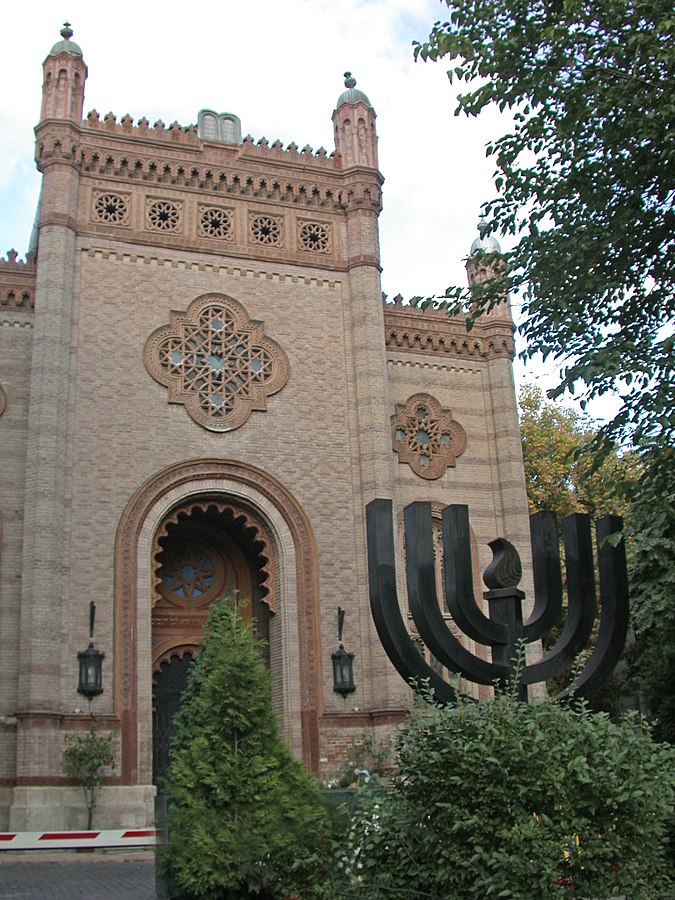 The Coral Temple Photo: MM/ Wikipedia
The Coral Temple Photo: MM/ WikipediaIn time, the building suffered various alterations, including an expansion in 1932. A new wing was built then to accommodate a conference and events hall, a museum, an archive and a library.
Stavropoleos Church in Bucharest
This is a gem of the capital's old town, a tranquil spot in an otherwise agitated city. Built in Brâncovenesc style, the church was erected in the 18th century, during the reign of Nicolae Mavrocordat. It used to sit on the premises of an inn, demolished at the end of the 19th century.
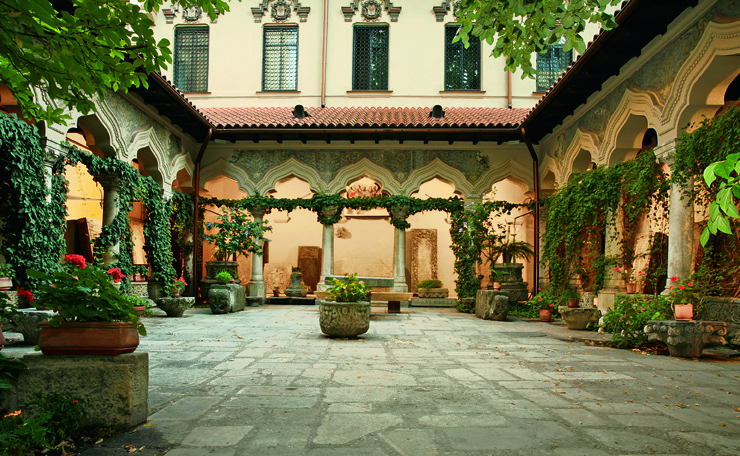 The inner courtyard of the Stavropoleos Church Photo: stavropoleos.ro
The inner courtyard of the Stavropoleos Church Photo: stavropoleos.ro The choir of the church sings (neo-)Byzantine music and has recorded several CDs with it. The church also hosts in its library a large collection of religious books, and many old icons and religious items.
The choir of the church sings (neo-)Byzantine music and has recorded several CDs with it. The church also hosts in its library a large collection of religious books, and many old icons and religious items.
Horezu Monastery in Horezu
It was founded in 1690 by Prince Constantin Brâncoveanu in Horezu, in southern Romania's Oltenia region. It is considered a masterpiece of the Brâncovenesc style, and has been included on UNESCO's World Heritage Sites list. A school of mural and icon painting was established at the monastery in the 18th century, recognized in the Balkan region.
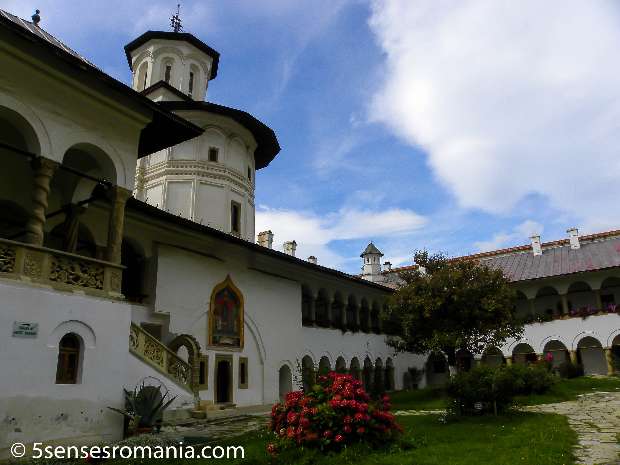 Horezu Monastery
Horezu MonasteryHorezu is also know for the traditional pottery manufactured here, decorated using an ancient technique, and part of UNESCO’s Intangible Cultural Heritage List.
The Roman-Catholic Cathedral in Oradea
The cathedral, which carries the name ‘The Assumption of the Blessed Virgin Mary’, is located inside the city’s Baroque Complex Park. The building was erected in the 18th century based on the plans of Viennese architect Franz Anton Hillebrandt, who became the chief architect of the Imperial Court. It was consecrated in 1780 and it is one of the largest Baroque buildings in the country.
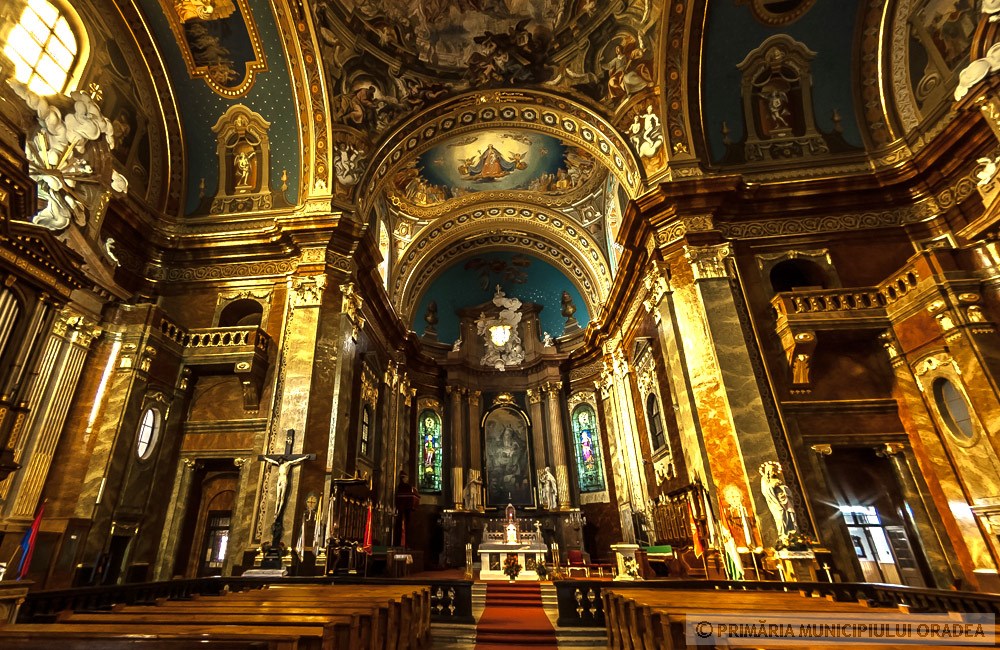 The Roman Catholic Cathedral Oradea Photo: oradeatravel.ro
The Roman Catholic Cathedral Oradea Photo: oradeatravel.roThose who go inside are welcomed to beautiful altars, balconies and paintings. The fresco of the cupola was painted by Bavarian Johann Nepomuk Schopf, while the main altar was painted by Austrian Vincent Fischer. The cathedral has an organ dating back to the year of its consecration, donated by Empress Maria Theresa of Austria. There is a second, smaller organ, used regularly at the religious services.
The Orthodox Cathedral in Timișoara
Located in the center of the city, the cathedral was designed according to the plans of architect Ioan Troianescu. It started being built in 1936 and was inaugurated in 1946, in the presence of King Michael. The edifice features 11 steeples covered with tiles, an 84-meter tall tower and seven large bells. Its architecture is representative for the local traditions.
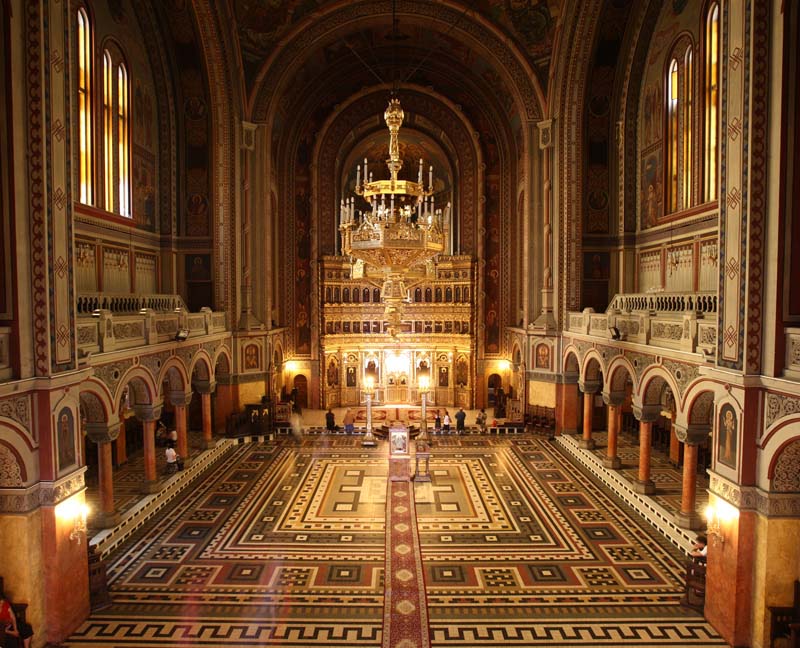 The Orthodox Cathedral in Timisoara Photo: mitropolia-banatului.ro
The Orthodox Cathedral in Timisoara Photo: mitropolia-banatului.roThe museum of the cathedral hosts a large collection of religious art, including icons painted on wood and glass, and an important collection of religious books.
The Metropolitan Cathedral in Iași
Unlike other similar edifices, the Iași cathedral carries three dedications: to Saint Parascheva, to the Presentation of Jesus and to Saint George. The cathedral owes its beginnings to a decree of 19th century Moldova prince Ioan Sturdza. After being initially designed by Viennese architects Johann and Gustav Freywald, its plans were redone between 1880 and 1887 by Romanian architect Alexandru Orăscu.
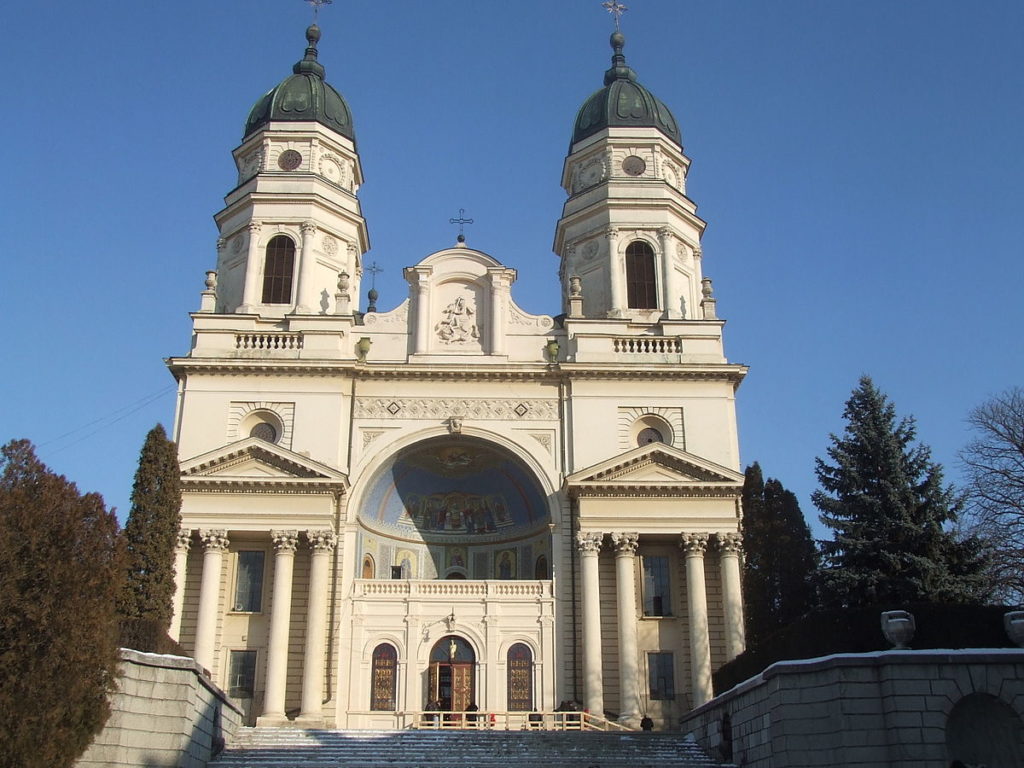 The Metropolitan Cathedral Iasi Photo: Marcos56/ Wikipedia
The Metropolitan Cathedral Iasi Photo: Marcos56/ WikipediaIt was inaugurated in 1887, in the presence of King Carol I and Queen Elisabeth, who donated large sums for the project. The Baroque style dominates the exterior and interior decoration. The cathedral attracts a large number of pilgrims every October as it hosts the relics of Saint Parascheva, a patron saint of Moldavia, brought here in 1889.
editor@romania-insider.com












